Text
Should You Buy a Smartwatch?
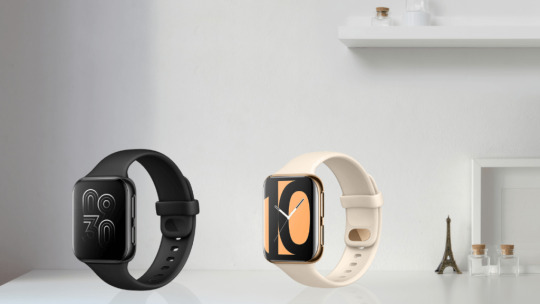
Smartwatches will be the next big gadget to hit the wrists of celebrities and sportsmen. They're small, stylish, and designed to be their wearer's only device. And, like all great gadgets, they come with a wide array of different price ranges. Smartwatches will be able to run on their own software and deliver personalized information. They'll have GPS and could link up with Bluetooth devices.
The biggest advantage of smartwatches is that they'll make calls without you having to pick up your smartphone. This is a huge advantage over traditional cell phones. If you get pulled over, you've got to take out your phone, press a few buttons, and talk to someone on the other end. If you're driving, you have to take out your phone and make calls; it's a hassle. Smartwatches will allow you to make calls, send text messages, and take notes all on the same screen. Not only will this make your life more organized, but it'll make sure that you always have your hands free to do other things.
Like your smartphone, the smartwatch has many features that you may find very useful. For example, if you're traveling or outdoors, you can use your smartwatch as a GPS device. It won't tell you where you are, but it can tell you how far you are from where you started, and if you're walking in the right direction. It can even connect with your automobile's navigation system, which could make finding your way much easier than if you rely on your smartphone or another hand held device. Other daily activities, including fitness and cooking, can also be enabled by the smartwatch.
Most smartwatches have heart rate monitors built into them, but some newer models include thermometers as well. This can be a great feature for runners, bikers, and any other person who practices high intensity exercises. You'll know exactly how hard you're working when you receive the information from your wristwatch.
One of the drawbacks to smart watches, at least compared to smartphones, is that they don't hold as many memories as a smartphone. And while the iPhone can store tons of music and movies, smart watches generally can't store anything that's longer than a couple of hours. Therefore, most of your data will have to be loaded up on your phone, which will mean you'll need to take the time to sync everything again, making it less efficient than it could be with your smartphone.
Another shortcoming of smartwares is their limited functionality. They generally don't offer a lot of different options, like you'd find with smartphones. If you need an application for your watch, then you have two choices by the app or load it on your phone, which can be a hassle. As well, smartwatches have very short battery lives. So, if you've set up your watch to track your exercise and workouts, then you might be able to get away with a cheaper, lower quality smartwatch, but for a lot longer.
On the other hand, smartwatches have come a long way since their early days. They are now very comfortable to wear, with many models including heart rate monitoring features, as well as the ability to link your wristband through several different accessories and bands. More recently, manufacturers have started to include extra information like voice recognition so you don't have to look at the watch when you speak. More affordable smartwatches have also become available thanks to some great deals online. These lower priced watches are perfect for those who want to be stylish, but don't necessarily want to break the bank. However, if you do decide to buy one, make sure you know what you're getting.
0 notes
Text
All About Computer Accessories
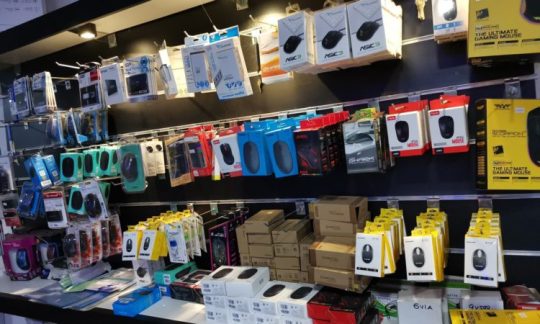
The development of computers and their applications has allowed many different types of businesses and individuals to achieve a higher level of accuracy and productivity. Computers have greatly reduced the time it takes for employees to complete their work. These days, most people can be expected to be able to work on-the-spot when called upon by a customer. In addition, most people now routinely interact with electronic devices such as televisions, laptops, desktops, etc. In fact, the advent of the personal computer has greatly enhanced the efficiency of most human relationships.
Computers are generally classified into three main categories: desktop, laptop, and personal computer. Desktop computers are the smallest type of computer. They are generally only useful for providing basic functions like word processing and web surfing. Laptops provide more capabilities than desktops. They can act as a desktop computer plus a portable multimedia player such as a DVD player.
Laptop computers provide the most popular way of using a personal computer. Laptop computers come in all sizes and are quite portable. Many laptop computers are so small that they can fit in a shirt pocket. Most laptop computers come with built-in keyboards. These keyboards make using the computer much easier.
A third category of computers is known as desktop computers. Desktop computers are used as the primary storage device for storing files. Desktop computers do not have graphics capabilities. They are very different from laptops in the way that desktop computers are used.
All three types of computer storage devices are important for computers. Storage device allows a computer to store data on a non volatile medium. Non volatile storage devices such as CD ROM and DVD ROM allow the computer to be accessed even when the power is off. Standard hard drives do not have any memory capability and cannot store data. Computer storage devices help to keep the computer running without the need to re-install the operating system every time it is needed.
There are many places where you can buy computer accessories including online stores and computer accessory stores. You can use these stores to compare prices and types of computer accessories available for your computer. Sometimes, it is also helpful to purchase computer accessories that you might never use. For example, you might need to purchase a mouse or a monitor only to later discover that you do not need it to operate your computer. By purchasing a computer accessory at a low price then it can be returned later, you will not be spending money on a product you will never use.
By keeping an eye out for computer accessories like computer mice, scanners, printers, USB drives, etc., you can make the most of your computer whether it is idle or not. The last thing you want to do is to damage your computer by using the wrong accessory. By purchasing the right computer accessories your computer will always be ready when you need it to be.
You should make sure that your computer has all the basic computer accessories such as a monitor, printer, keyboard and mouse. However, these items can be used without any problems in the case that your computer is not connected to a power supply. It is recommended that you purchase an external drive if you plan on storing large files. You can store your important documents in an external hard drive and access them from any computer.
In order to make the most of your computer, you must keep it clean. All computer accessories should be cleaned on a regular basis. This will allow you to maintain the best working condition. If you use your computer for work, it is important to have anti-static wrist pads. These are designed to avoid damaging the monitor when they are in contact with its surface.
If you purchase a new computer, you should look for computer accessories like a mouse. Mouse is a great computer accessory that will allow you to easily maneuver your mouse throughout the entire desktop. It also helps in making your work comfortable as you will not find it difficult to click on anything. There are many computer accessories that you can use and this will ensure that you remain comfortable while using your computer.
0 notes
Text
A Brief History of Computers
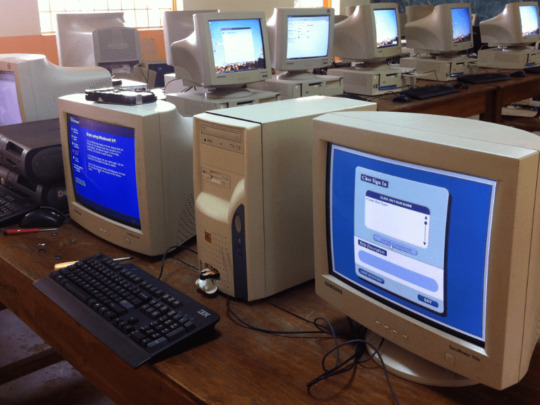
Early desk based computers used general purpose input/output devices such as keyboards and display terminals. The basic function of these devices was for input and output with little regard to what was being stored in the form on them. The word processing capabilities were so poor that a personal computer would simply be a piece of paper. However, this has changed with the advent of Personal Computer or PC's.
PC's are designed to perform much more than simple keyboard input and output. It is now a common use of PC's to connect printers to personal computers and external data drives to external hard drives. The functionality of a personal computer (PC) has increased dramatically over the years with the advent of new hardware and software designs. In fact, today there are hundreds of different types of hardware and software combinations available. The growth in the size of the market has also increased with the ability of PC's to connect to much larger data centers. This increase in storage capacity and network bandwidth have made it possible for PC's to function as personal information management devices.
The input and output devices used with PC's are generally categorized into three categories. These are the physical input devices, which include keyboard, mouse, and monitor; the logical input devices, which include any drive that is physically attached to the PC such as a CD-ROM; and the non-physical input devices, which include any device connected to the PC which is not a drive. The logical devices are used for executing instructions stored on a ROM chip, any embedded software, or other system services such as networking. Non-physical input devices are used for connecting printers to the PC and to any other peripheral devices. Output devices are used to send processed data to output devices and to connected software.
With the increasing number of input and output devices, the PC begins to perform more functions and is increasingly taking up computer space. To remedy this situation, the size of the RAM has been increasing steadily. The main reason why the RAM has been increasing is because the computer needs to store more processed data as the user uses the computer. Another reason the size of RAM has been growing is because the computer has become an increasingly complex piece of machinery. As a result, more complex programs require more stored RAM to operate properly.
Even though there are a great many input and output devices used in a typical PC, nearly all of these devices and their functions are stored in memory. This is usually done through the CPU, which is the central processing unit of most computers. When the CPU is running, it will often use more than just its own memory to run the machine. This is because the CPU is almost always attached to a separate input and output device, and in the case of many personal computers, this device is a joystick type called a keyboard.
IBM is one of the earliest makers of personal computers. Many early models of IBM computers used a mainframe computer in place of the RAM. In the mid 1980's, the first commercial PC was made by ARPA (Advanced Research Associates) based out of a small office building in New York City. A few short years later, the first personal computer systems using the Linux operating system were sold commercially. In recent years, even the largest of multinational companies have switched to using PCs for computing.
IBM is probably the world's largest maker of mainframes. The company also has a strong tradition in computer research, and it is almost always the case that IBM's engineers will be working on at least one open source project. These Open Source projects are often based on older technology that IBM has acquired and adapted to make the systems as efficient and secure as possible. If you have been thinking about purchasing or considering buying an IBM machine, you may want to look into an IBM or division. IBM x combines the best of desktop and mainframe machines into a single unit.
0 notes
Text
The Basics of a Computer
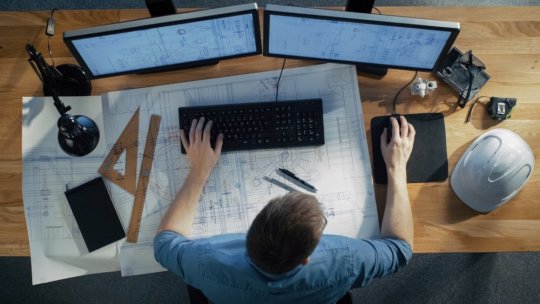
Modern computers are generally integrated circuits (IC's) which are programmed in a number of different ways. The different software programs are stored on special computers called microprocessor chips. The main components of a computer system are the central processing unit (CPU) which is located inside the computer, main memory, which is usually fixed permanently in one location, and hard drives that can be attached to the CPU or other external components. There are several different types of hardware which may be attached to the CPU.
The main types of hardware which can be attached to a PC are motherboards, processors, printed circuit boards (PCB), hard disks, magnetic stripe drive controllers, expansion slots, video output and input devices, and random access memory (RAM). Motherboards act as a communication interface between the computer and the external peripherals. Motherboards can connect to serial buses, mainframe computers, ISA bus, the USB bus, and other peripheral devices. The most popular type of motherboards are those which provide both input and output (I/O) for serial ports. The most common type of input and output devices are the keyboard, mouse, monitor, USB mouse, digital camera, video camera, scanner, headset, speaker, USB storage device, printer, and scanner.
In addition to the motherboards, processors, printed circuit boards, and hard disk controllers, there are a number of other external components which can be used in desktop computers. These external components include: Integrated Circuits (ICs), such as printers, scanners, and faxes; hard disk drives which may contain one or more spinning disks; memory cards for saving data files; compact-drive or flash memory cards for storing information on the computer; fasteners and connectors for connecting external hardware devices to the computer; and the operating system itself. Computer peripherals can also be built into the desktop computer. When a keyboard, mouse, monitor, and graphics card are built into the desktop computer, it becomes a 'complete' computer system.
The computer system architecture is the set of instructions a processor follows to execute its task. A number of microprocessors are used in the desktop PC architecture. The various components of the computer architecture are instruction sets, control codes, and machine registers. Instructions, or codes, are a series of computer commands that the microprocessor follows to carry out a particular function.
Computer components can be operated by one microprocessor or by many microprocessors. The main computer connections are cables and wires, usually running through the body of the machine. Computer components can also be operated through magnetic contacts, which can make them easier to install than other methods of connection. The power source can be an AC/DC adapter or a pluggable type of power connection.
The three basic elements of any computer are the motherboard, the central processing unit, and the computer case. The motherboard connects the various internal components of the desktop computers to the CPU. The central processing unit is the brain of the computer and is generally constructed along with the CPU. The computer case consists of the monitor, keyboard, mouse, and any other peripheral devices that are needed to operate the desktop computers. Other important components are the hard disk drive, the memory, the optical drives, and the bus connectors. All these parts of a computer are essential for normal operation but sometimes need to be upgraded for new technology.
PDAs are smaller than desktop computers and contain a touch screen, a keyboard, a monitor, a digital camera, and some sort of memory card reader. The difference between a PDA and a laptop is that the functions of the PDA are all stored in its internal memory, while the operations of laptops are more complicated since they need additional memory, additional batteries, and other internal components that may not be included in a PDA. PDAs are commonly used for applications like text messaging and web browsing.
0 notes
Text
The Various Parts of a Laptop
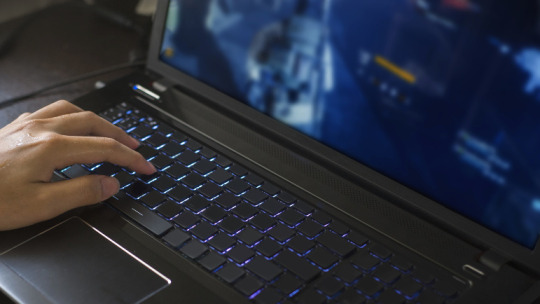
A laptop has many components apart from its display screen and main processing unit. There are the internal battery, a processor unit, a non-volatile storage device, a main system unit, an operating system, memory card, and a touchpad. The battery is the most important component of a laptop, as it determines the amount of time the laptop will operate for. A dead battery will eventually need replacement, though expensively. The processor unit is what runs most of the central processing unit (or CPU) of a laptop. The chip inside the laptop contains instructions to do everything from setting up the keyboard and mouse, input data, etc...
Laptops also use random access memory to store information such as text, music, videos, etc... A laptop's speed depends on how much memory it has. The latest and greatest laptops usually have at least two gigabytes (two hundred thousand bytes) of RAM. Even the cheapest laptops have more than this. Other upgrades to a laptop include faster processors and more memory; therefore laptops get faster and run faster.
Touchpads are used for input purposes, such as typing on a laptop, and can be customized for a specific user. The standard laptop touchpad will have a scrolling button, a home button, and a menu button. Manufacturers have found a way to add a second touchpad to their laptop so that one can scroll up and down with one hand and see the other input. Manufacturers of touchpads that are specifically made for laptops tend to have a nice selection of colors and designs to choose from. One can also find a keyboard with a trackball built into it.
Built-in keyboards on laptops allow laptop users to replace the laptop's regular keyboard with their own special one. It's very common for laptop users to find themselves carrying around their entire laptop on their back all the time. For this reason, laptops with built-in keyboards tend to have larger screens and a larger size than the standard desktop pcs. However, many standard sized desktop computers have a smaller screen size than a laptop. Therefore, a laptop keyboard will be larger than a standard keyboard and have more keys.
Another part of a laptop that is separate from the actual computer is the touchpad. The touchpad is housing for the mouse, which is located under the keyboard or on the left side below the screen. Depending on the model, a USB port may also be built into the touchpad. The USB port allows users to connect their laptop to other peripherals such as printers. If you're using a laptop in order to do work that requires you to use a mouse, you should check to see if there is a USB port built into the touchpad.
These are just a few pieces of hardware that are found on desktops and laptops alike. As you can see, the laptop isn't quite like the typical personal computer. There are many pieces that make up the laptop. Laptops are mainly used to store information. A laptop is more like a portable computer or a work horse.
0 notes
Text
The Pros and Cons of a Laptop
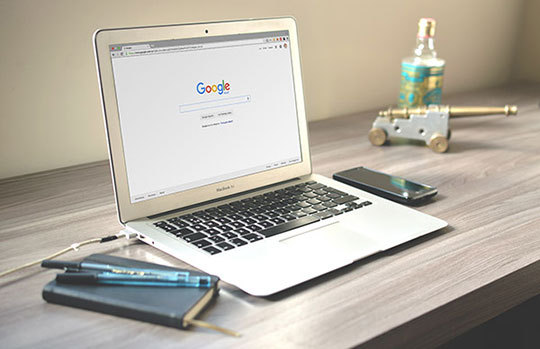
As laptops are increasingly smaller, they are also easier to transport from place to place. Although some people will argue that desktop computers are already easy to carry, the truth is that it takes a considerable amount of force to carry a desktop computer from place to place. Laptops, on the other hand, are much lighter. Thus, it is now easier for people to take their laptops along on business trips or vacation trips.
Even though the first laptop computers came with word processing programs, the field has changed over the years. Today you find that there are not only word processors but also programs for graphics design, music production, web browsing, email, instant messaging, video editing and social networking. The first laptop computers provided basic functionality for these tasks, but the availability of software developers has made it possible for laptop computers to perform a wide range of tasks. Today, even the smallest portable computers, which are in the range of six inches on each side, include video, music, web, email and gaming software.
Because laptops are so similar to desktops in many ways, you can often use them as if they are your desktop computer. For example, you can play your music through your laptop speakers. By installing video software, you can easily view your photos on your laptop screen. If you want to play your music through an external sound system, it would be easy to do this with your laptop.
One advantage that desktops have over laptops is the fact that you do not have to carry around a bulky machine. You do not need to worry about a keyboard and mouse, and you don't have to drag a heavy case around your desk or between your legs. However, when you are using your laptop computer for extended periods of time, you do notice a bit of a weight penalty. Laptops can weigh up to 25 pounds, depending on how heavy the case or backpack is.
A major disadvantage of laptops is that you are limited in the amount of memory that you can store on them. Many laptop computers come with just 1GB of memory, while desktop computers usually have at least one gigabyte (gig) of memory. Since you can not store as much information on a laptop, you will most likely want to buy a desktop computer instead of a laptop if you expect to be working with a lot of large information files.
Although laptops may seem like they are more convenient than desktop computers, there are many differences between them that you will want to consider. If you plan to use your laptop computer for extended periods of time, you will most likely find yourself choosing a desktop computer instead. However, if you are only planning to be using your laptop computer for short periods of time, then you may find that a laptop works just fine. You can also purchase an external monitor that will allow you to view the screen of your desktop computer from the distance of five or six feet. External monitors are typically more expensive than their internal counterparts, but they do allow you to view your desktop computer even when it is in your hand or resting on your lap.
Also, you might be interested in buying a laptop bag. If so, you should visit cxsbags.
0 notes
Text
What to Look For in a Smartphone?

So, why people buy so many smartphones? There are actually several reasons. One is the convenience of taking telephone calls while you are away from the home base unit. This makes it a great travel tool.
Another reason to buy a smartphone is for business. Smartphones are used in virtually every part of the world and in every type of business. For instance, if you own a dentist office, you could use your smartphone to conduct business with clients and patients right from the comfort of your dental chair. If you run a franchise or have a business where you provide services to multiple locations, a smartphone will come in very handy.
Why are some phones more expensive than others? The cost of a smartphone depends on several factors. The first is the type of phone you are buying. There are two main types: standard and advanced. Standard smartphones have fewer features and are typically more affordable.
You can also choose from a range of smartphone carriers. The most popular smartphone carriers are AT&T and Verizon. If you go with one of these carriers, you'll be able to use your smartphone either with a contract that is prepaid, or without a contract, which means you pay for it upfront and then decide whether or not to use it. Many people like to have the choice of plans, especially those who need a smartphone for business but don't necessarily want to sign up for a long-term contract with a service provider.
What are the differences between regular smartphones and smartphone devices for business? Regular phones have cameras, keyboards and other basic features. Smartphones, however, include GPS technology, high-end processors, media players and more. They also offer applications that allow you to do things that you couldn't do on a regular phone. You can also stream videos on your smartphone instead of using a video player. Some phones also include widgets that allow you to access your email, Facebook and Twitter on the go.
You need to consider several things before choosing a smartphone for business. First, decide how much you want to use your smartphone for and how often. Second, consider how secure you want your smartphone to be and whether or not you need any applications that can keep your smartphone safe while you use it. Third, decide what screen size and resolution you need.
Before deciding which smartphone you need for your business, you should compare several models. Read user reviews to see how users found the smartphone that you are considering. You can read the user reviews on the manufacturer's website as well. If you prefer to shop online, you can easily compare the features and prices of several smartphones.
One of the first factors to consider is the screen size. Many of the smartphones being released today have large displays. The screens on some of these devices are so large that they are difficult to read when you are lying on the bed. You should also consider the keyboard and how comfortable it is to type on. Some devices will allow you to customize the size of the keyboard. This may be an advantage if you frequently write emails and need a larger keyboard.
You will also want to choose the type of battery life that your smartphone offers. You should be able to get enough battery life to perform all of your daily tasks. You will also want to consider the amount of memory that your smartphone has. Most devices will offer between two to four gigabytes of memory. If you plan to download large videos and pictures, you will likely need additional storage space.
Another factor to consider is the operating system that your smartphone uses. You should find a manufacturer that provides the operating system that you prefer. Each operating system will have different features, which means that some of the features may not be useful to you. For example, some smartphones will only allow you to make and receive calls while others allow you to browse the Internet, view photos, check the weather and even control your camera settings.
These are the most important features to look for in a smartphone. Other features such as wireless connectivity and screen size may be more important to you depending on how often you use your smartphone and whether you use several devices or just one. Regardless of which features you find, your smartphone can help make your business run more smoothly.
1 note
·
View note